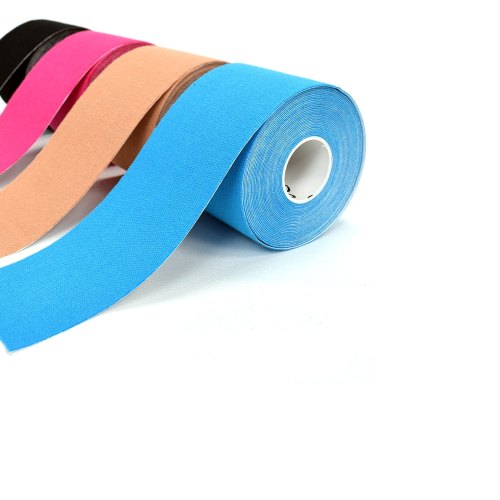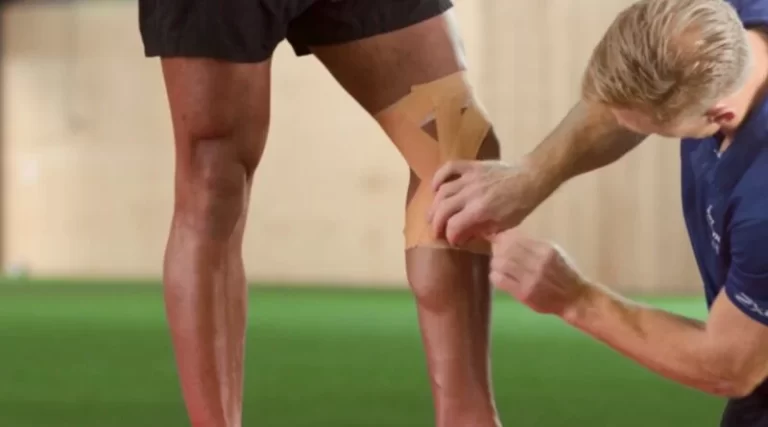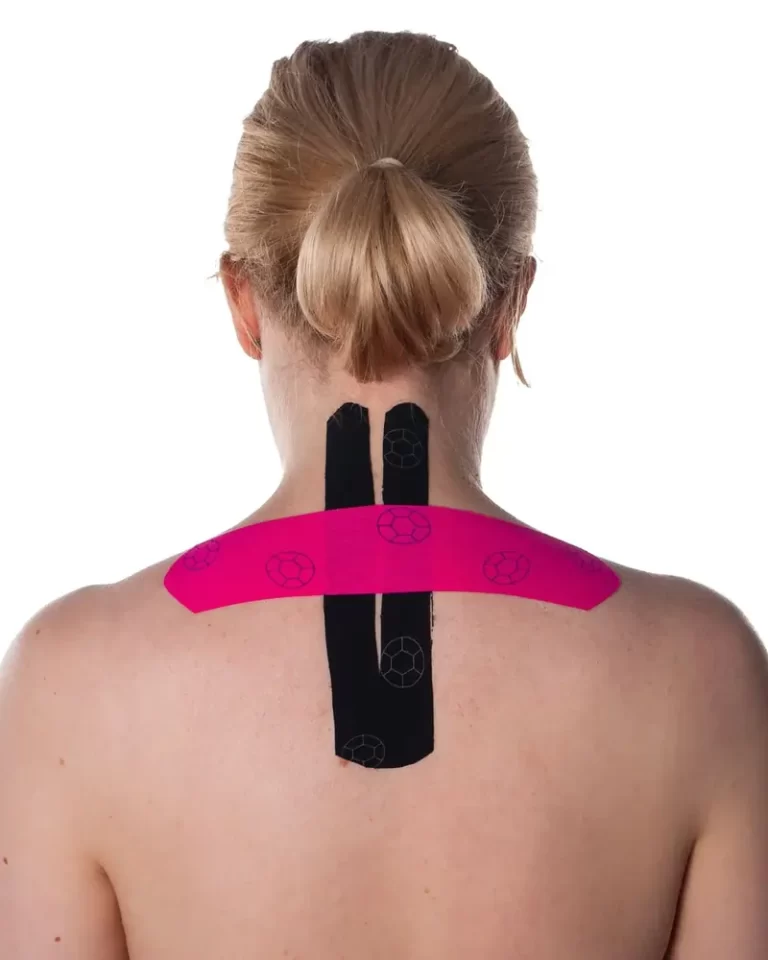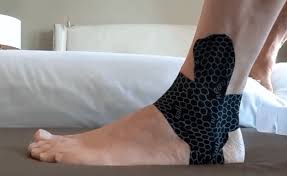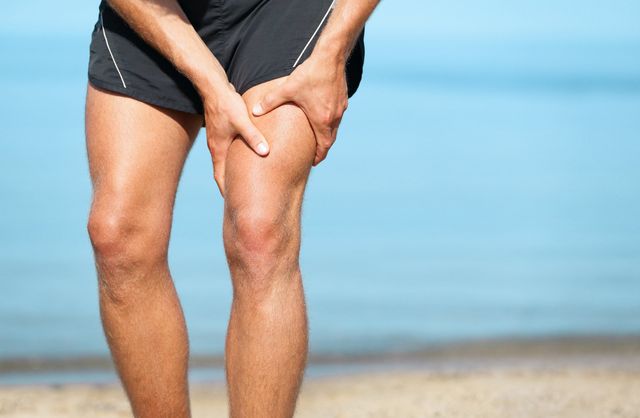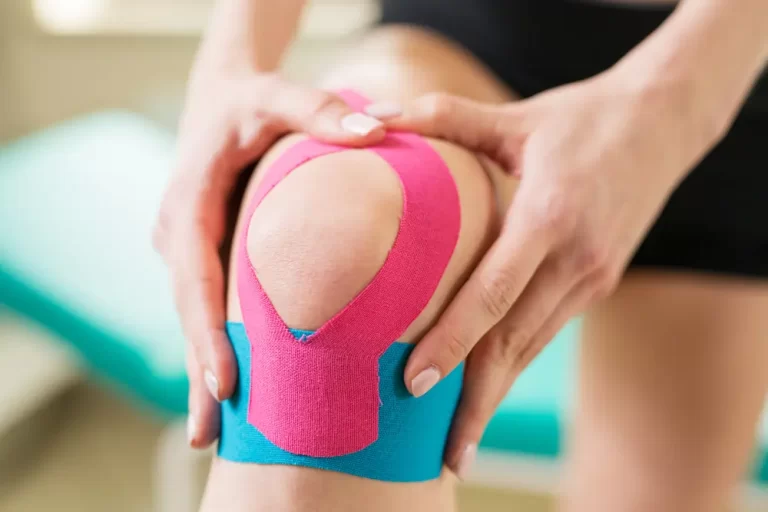KINESIO TAPING FOR MCL TEAR | KT Tape for MCL Injury
Table of Contents
Introduction :
Kinesio taping for medial collateral ligament tear or sprain is effective technique to reduce pain and support the joint. It is most commonly using technique now a days for the treatment of MCL Tear. Taping on medial collateral ligament tear are use to supply static stability as well as dynamic stability to ligamantous structures and therefore the knee joint. The kinesio taping is use to produce further dynamic stability to the ligaments.
Where typical taping methods give static stability to the ligaments structure while the kinesiological recording provides dynamic stability to the joint.
Kinesiological tapping could be a rehabilitative cum protecting use of elastic kinesiological tapes to supply :
- reduction in knee pain whereas pcl abraded
- enhancing performance of affected knee
- preventing any injuries to the knee
- support to the knee joint
- repositioning of structure of knee
- facial and ligamentous correction of knee.
- It facilitate the healing methodology whereas providing full computer memory with support to the joints suppotive structure still as mobilization effects.
- Medial collateral ligament (MCL) injury, is one the foremost common ligament injuries of the knee.A medial collateral ligament (MCL) injury could be a stretch, partial tear, or complete tear of the ligament on the within of the knee. it’s one of the foremost common knee injuries and results principally from a valgus force on the knee.
- MCL injuries principally occur when an impression on the outside of the knee, lower thigh or higher leg, once the foot is in-tuned with the bottom, and unable to move.
- The MCL on the within of the knee can become stressed because of the impact, and a combined movement of flexion/valgus/external rotation can lead to tears within the fibres. The athlete would possibly feel immediate pain, and feel or hear a pop or tearing sound. mostly the deep a part of the ligament gets broken first, and this could result in medial meniscal injury or anterior symmetrical ligament injury.
- As with all the ligament injuries, the MCL injury is hierarchical I, II or III (this grade is given depending on the degree of sustained tear). A grade I tear consists of but 100 percent of the scleroprotein fibres being torn, with some tenderness however no instability. Most of the patients feel pain after we apply force on the skin of a rather bent knee, however there are not any other symptoms. It connects your femur to the bone of your lower leg.
- The MCL keeps the knee from bending inward.Ligaments hold bones along and add stability and strength to a joint.
- The MCL connects the highest of the shinbone, or shinbone, to the bottom of the femoris, or femur. Associate in Nursing injury to the MCL is commonly known as Associate in Nursing MCL sprain.
- Ligament injuries will either stretch the ligament or tear it. MCL injury of the knee is sometimes caused by an immediate blow to the knee. this sort of injury is common in-tuned sports.
Relevant anatomy :
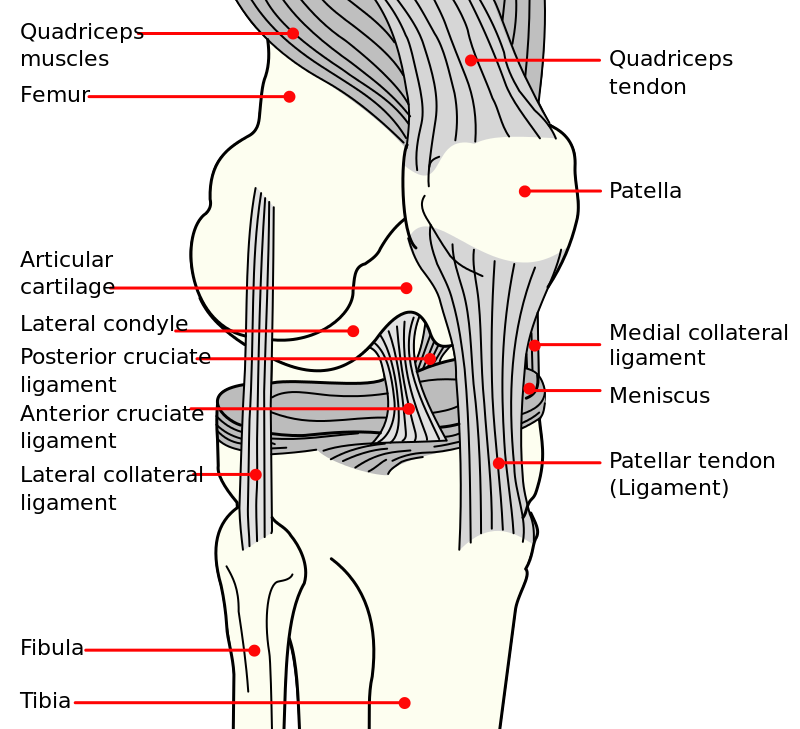
- The medial collateral ligament may be a massive ligament on the medial aspect of the knee. For a lot of clinically relevant anatomy of the knee .
- The medial collateral ligament (MCL) is one among the four ligaments that are important to maintaining the mechanical stability of the hinge joint.
- The ligamentous sleeve spans the complete medial aspect of the knee from the medial side of the a lot mechanism to the posterior side of the knee A ligament, manufactured from a great deal of collagen fibres and small elastic fibres, not only functions to regulate excessive motion by limiting the joint quality however is additionally a source of proprioception.
- Its function is to resist forces applied from the outer surface of the knee then prevent the medial portion of the joint from widening underneath stress.
- Proprioceptors are situated in ligaments however additionally in muscles and joint capsules. These proprioceptors monitor the position of our limbs in space, our movements, and therefore the effort we have a tendency to exert in lifting objects.
Causes of MCL tear :
- MCL tears will occur from a sudden blow to the knee or from overuse of the ligament. most typically, a powerful force against the outside of the knee causes the MCL injury because the knee bends inward toward the opposite knee. A fall during which you land along with your leg splayed out can tear the MCL.
- Overuse of the MCL from recurrent stress will stretch out the ligament and cause injury.
Risk factors of MCL tear :
People with the highest risk of tearing their MCL are people who play contact sports or sports that are a lot of possible to cause twisting of the knee by pivoting or stopping suddenly. a number of these sports include:
- Basketball
- Soccer
- Skiing
- Football
- Wrestling
- Hockey
- Swimming (due to leg kicks for the breaststroke or whip-kick technique)
- It’s important to continually wear appropriate safety instrumentality and use correct technique once participating in any form of sport or exercise.
- Regular physical exertion to strengthen muscles and bones might facilitate prevent MCL injuries.
Symptoms of MCL tear :
- The symptoms of associate MCL injury are almost like symptoms of alternative knee issues. It’s necessary for your doctor to look at your knee to determine the problem.
- The symptoms of associate MCL injury might include:
- a pop sound upon injury
- pain and tenderness on the inner a part of your knee
- swelling of the hinge joint
- a feeling that your knee is going to provide out after you place weight thereon locking or catching within the hinge joint
- Problems with knee stability usually indicate grade two or grade three injuries.
Grades of MCL tear :
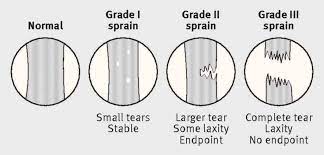
Grade -1
- The treatment for isolated grade I injuries is principally non-operative. throughout the primary forty eight hours, ice, compression, and elevation ought to be used the maximum amount as potential. In general, incomplete tears of the MCL are treated with temporary immobilization and therefore the use of crutches for pain management.
- Isometric, isotonic and eventually isokinetic progressive resistive exercises are begun inside some days of the subsidence of pain and swelling. Weight-baring is encouraged, the speed being determined by the extent of pain.
Grade -2
- Pain on the within of the knee is a lot of intense, and there may additionally be swelling. once the knee is rapt by hand, the joint are loose. These symptoms indicate a partially torn MCL.
Grade -3
- The person can have severe pain and tenderness on the within of the knee, and there’ll be swelling at the location of the injury.
- The joint are noticeably unstable once manipulated by hand and will consent pressure. These square measure symptoms of an entire MCL tear.
Tapping for MCL tear :
- Taping used in employed in the field of rehabilitation as a method of treatment for knee injuries but much of the evidence is contradictory.
- Taping is one among the adjunct treatments that we have a tendency to as physiotherapists would possibly use with our patients together with well supported techniques like patient education and exercise therapy. we have a tendency to could argue that if tape includes a positive impact, be it placebo or mechanical, then we must always use it.
- provides a firm support, holds and reduces movement of a joint with a powerful and sticky material, examples include Strappal or Endura Fix.
- Rigid strapping tape usually used in tape or strapping is commonly referred to as “sports tape” or “athletic tape” and is most frequently a rigid type of strapping tape. Elastic husky tape may be used once less rigidity or support is needed.
Two form of Tapping :
1. Rigid tape :
- For Medial knee ligament injury taping you should add further support strips at the edges of the knee to prevent lateral (sideways) movement of your knee.
- All tape techniques follow an equivalent basic principles.
- Step one – anchors
- Place anchor strips round the lower leg and knee.
- Use elastic tape for anchors thus it allows area to stretch as your muscles expand once exercises.
- Step a pair of – Support strips
- Apply support strips between the anchor strips.
- For MCL sprains ensure you add further support strips to each side of your knee to prevent extension.
- Step four – Finishing strips
- Apply finishing strips within the same approach you probably did the anchor strips.
- These hold the support strips firmly in place
2. Kinesio tape :
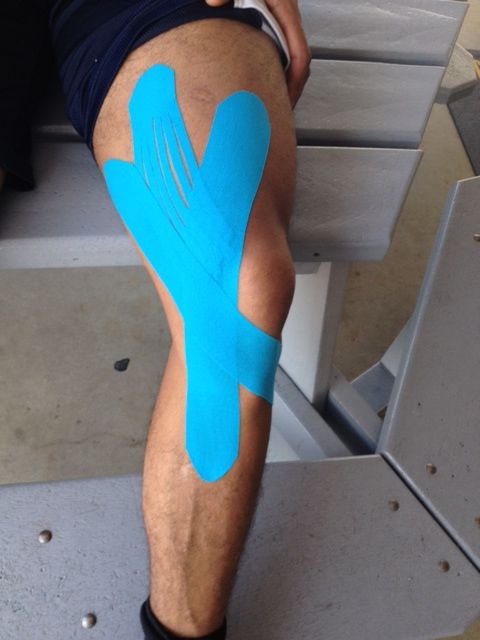
- Sit with the knee bent at ninety degrees and maintain this position throughout the tape procedure.
- Cut four strips of K-tape regarding five inches long.
- Apply one finish of the K-tape with no tension on the leg bone tuberosity. Apply five hundredth tension as you wrap the tape round the medial aspect of the knee cap and up toward the centre purpose middle length of the thigh.
- Place one end of the K tape on the lateral used in of the lower leg. Apply five hundredth tension on the tape as you apply the strip across the medial aspect of the knee.
- Apply no tension as you lay down the top of the tape on the medial thigh. This strip of K-tape can facilitate support the MCL (medial collateral ligament) ligament and supply you a lot of stability.
- Using the backing paper of the tape rub the K-tape and warmth activate the glue on the tape.Repeat with the second strip to form associate degree “X.”
How to remove tape :
- So presently you’ve got your tape on and you’ve gotten that additional support throughout your chosen sporting activity, it’s time to need it off, so enable the United States to ease the tactic of removing physiology tape for you. the foremost effective tip we are going to provide once it involves removing your physiology tape is to peel the skin from the tape, not the tape from the skin.
- But in terms of the actual methodology, 1st ensure you’re removing the tape in an equivalent direction as a result of the expansion of the hair below it, and despite what you’re doing don’t rip the tape off kind of a plaster!
- Start slowly, folding the corners of the sting back bit by bit, guaranteeing that you’re birth the removed tape on the rear of the applied tape, as opposition propulsion the tape on top of and aloof from your arm.
- As you’re scraping the tape, hold your skin down beside your completely different hand and either regulator it or pull it gently among the opposite means of the tape. This helps the skin and so the tape to separate heaps expeditiously but with no discomfort.
- If the tape has been applied over a furred region of the body, it helps to maneuver on the tape as you are peeling it off, as a result of the pressure helps avoid a lot of pain.
- It’s knowing have shaved the realm before applying the tape but, as this isn’t frequently smart, taking this precaution square measure reaching to be necessary to some.
- want a bit additional assistance? Apply oil directly onto the tape, rub it in and wait around 10 to twenty minutes before removing it slowly. This will facilitate reducing the viscousness of the tape and build it easier to induce obviate.

